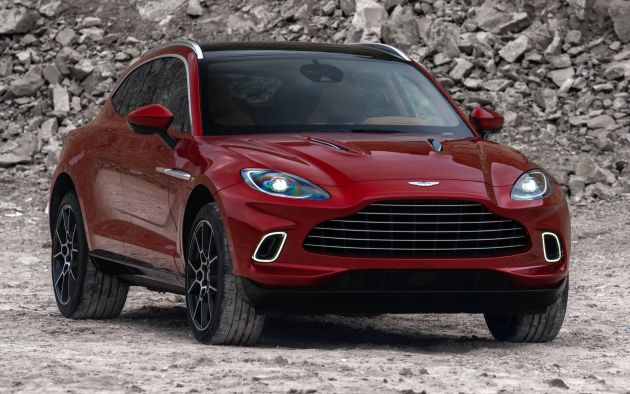For fans of the Aston Martin brand, the DBX has been a long time coming, because the British automaker has never made an SUV in its long and illustrious history. According to company CEO Andy Palmer, over 70% of Aston Martin owners have an SUV like the Porsche Cayenne or Range Rover at home, so all that needs to be done now is convert them over.
“What we are looking to do is cream off the top of that premium SUV sector. The Cayenne has been an important benchmark in the development of the car. Our cars don’t compete directly, but they [Porsche] are a very credible source when it comes to ride and handling, and build quality,” Palmer told Automotive News Europe.
As the first model to break the brand’s sports car and GT heritage, Palmer said he is confident the DBX will win it new customers, and its success will pave the way for the new Valhalla – a mid-engined sports car – and Lagonda luxury electric brand it promised to introduce in the near future.
When asked how important the DBX is to the company, Palmer said: “Every car we launch is important because of the way the business runs. But in terms of changing the company so that we address each of the luxury clusters, this is really important. So far, we have replaced the core GT and sports cars – our historical ground. This is the first model that expands the portfolio.”
Palmer hopes to sell at least 4,000 units of the DBX globally in the first 12 months of launch – deliveries are scheduled to begin in mid-2020. At peak sales, he said the company could even sell up to 5,000 units a year. This means the DBX will be the largest-single volume Aston Martin model, ever. This is really big news, considering that it sold a grand total of 5,117 luxury GT and sports cars in 2017.
The two biggest markets for the DBX are the US and China, with Palmer stating that the SUV has been “very much designed with Chinese and American customers in mind.” It’s currently available with the sole AMG-sourced M178 4.0 litre twin-turbo V8 engine that’s tuned to make 550 PS and 700 Nm, enough for a 0-100 km/h time of 4.5 seconds and 291 km/h top speed. A nine-speed 9G-Tronic (yes, from Mercedes-Benz) is standard, but the all-wheel drive system is developed in-house by Aston Martin.
A DBX, fresh out of the new St Athan facility
It’s rumoured that the model expansion will include a V12 engine (despite earlier reports stating that the 5.2 litre block won’t fit the engine bay) in the future, as well as a more efficient 3.0 litre mild-hybrid inline-six engine. This may well be the M256 engine that’s fitted to members of Affalterbach’s AMG 53 range, such as the E 53, CLS 53, GLE 53 and GT 53. In these models, it makes 435 PS and 520 Nm, while an integrated starter/generator provides an additional 22 PS and 250 Nm under acceleration.
Regarding the DBX hybrid, Palmer said he’s not a fan of plug-in hybrid because it adds weight and complexity. He prefers self-charging hybrids over PHEVs, but it all depends on regulations and C02 credit in some markets, which could inevitably push Aston Martin to introduce the DBX PHEV. The automaker hasn’t disclosed its cadence of hybrid rollouts, but every model will get a hybrid offering by mid-2020, Palmer said.
Meanwhile, Aston Martin shares have plummeted by about 80% since the company went public in October 2018. When asked if the IPO was a mistake, Palmer explained: “There’s no point in looking backward. The share price is obviously a disappointment and I have to acknowledge my role in that. But we have to get on and improve it. I think the importance of the DBX, and whether we can deliver it efficiently, will also affect the share price.”
-paultan









Tinggalkan komen anda